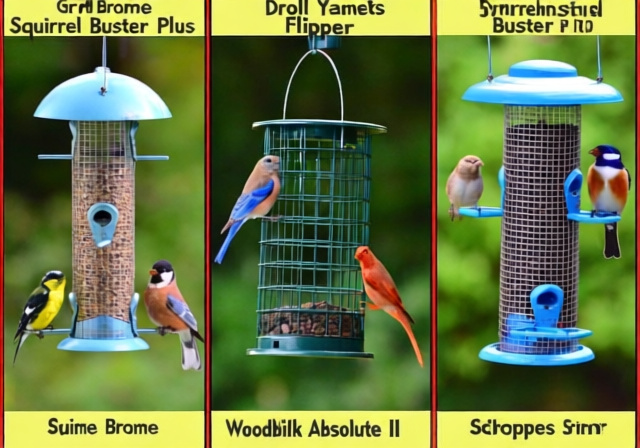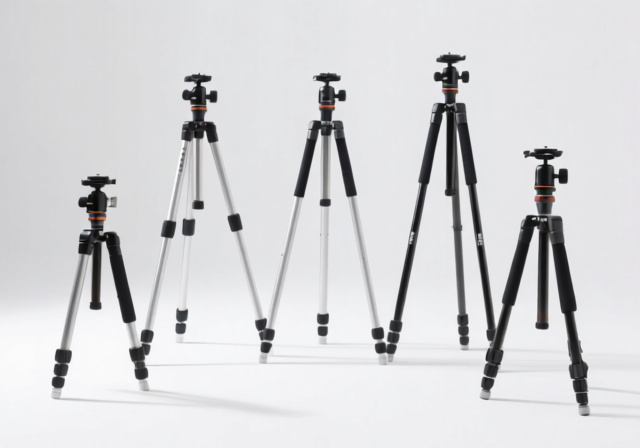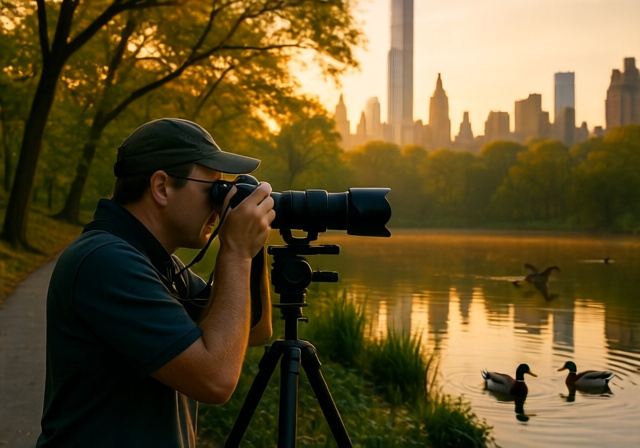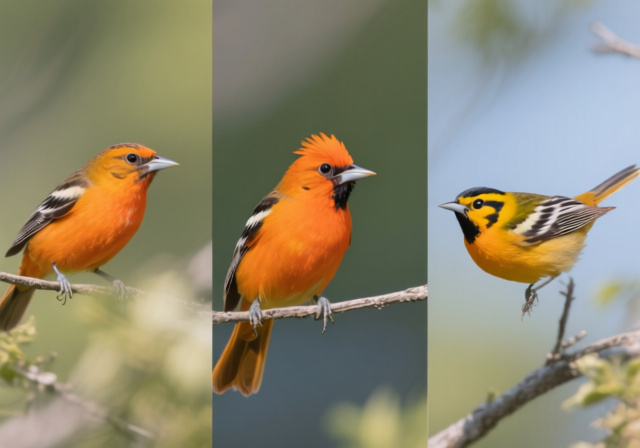

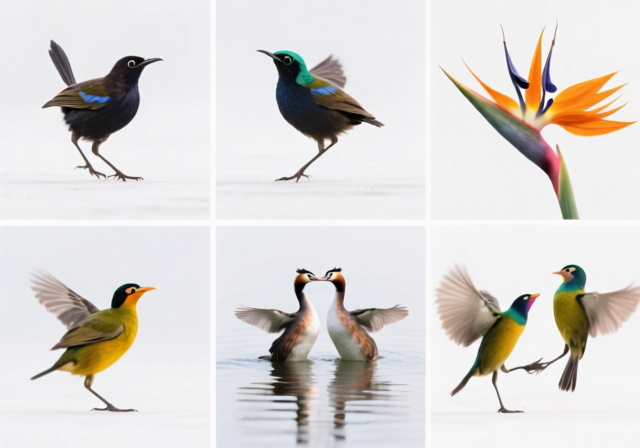

I’ve spent countless hours hidden in blinds, sometimes waking at 3 AM and hiking miles in darkness, all to witness nature’s most spectacular performances. Bird courtship dances are nature’s ballet, evolved over millions of years into displays so extraordinary they seem almost supernatural. After documenting breeding behaviors across three continents, I can tell you that nothing compares to watching a male bird-of-paradise transform into a living jewel or seeing grebes literally run across water in perfect synchronization.
Bird courtship dances are elaborate behavioral displays performed primarily by male birds to attract mates and demonstrate their fitness, health, and genetic quality through coordinated movements, visual displays, and often vocalizations. These rituals range from subtle head bobs to aerial acrobatics that defy physics, each species perfecting its unique performance over countless generations.
What makes these displays truly fascinating is how they combine instinct with learned behavior. After spending five years studying sage grouse leks in Wyoming, I watched young males practice their displays for weeks before ever attracting a female. They’d puff their chests, fan their spiky tail feathers, and produce that bizarre popping sound – sometimes getting it wrong, sometimes improving with each attempt. This blend of genetic programming and personal refinement creates performances that are both universally consistent and individually unique.
In this guide, you’ll discover eight of nature’s most incredible dance performances, learn the science behind these rituals, and find practical advice for witnessing and photographing these displays yourself. Whether you’re a wildlife photographer seeking your next challenge or simply someone who appreciates nature’s creativity, these courtship dances will change how you look at birds forever.
After decades of observation and consultation with ornithologists worldwide, I’ve compiled the most extraordinary courtship displays. Each represents a unique evolutionary solution to the universal challenge of attracting a mate. Some happen in seconds, others last for hours, but all showcase nature’s infinite creativity.
Quick Summary: From the moonwalking manakin to the synchronised swimming grebes, these eight species perform nature’s most spectacular mating rituals. Each dance requires specific timing, location, and patience to witness.
Deep in the rainforests of Central America, I witnessed what might be nature’s quickest dance – the incredible moonwalk of the red-capped manakin. This tiny bird, no bigger than your thumb, performs a display that lasts less than a second but includes a full backward slide across a branch that would make Michael Jackson proud.
The male starts with an elaborate setup, clearing his display branch of any leaves or debris. Then he begins his routine: a series of snap-like wing sounds created by vibrating his feathers at 100 times per second, followed by a rapid forward leap and that famous backward slide. The entire sequence is so fast that without high-speed video, you’d miss it entirely.
Photography tip: Set your camera to 1/4000th second shutter speed with continuous autofocus. I learned this the hard way after missing three consecutive displays. The males use the same branch repeatedly, so once you spot it, focus there and wait.
Best viewing: March through May in Costa Rica’s lowland forests. Look for small clearings where multiple males perform in close proximity – they often compete for the best display branches.
I’ll never forget my first grebe “water dance” in Oregon. At sunrise, two birds rose up and literally ran across the water’s surface, their feet creating a series of skips that defied gravity. This “rushing” display is one of nature’s most spectacular ballet performances.
The dance begins with an elaborate courtship that can last days. The pair engage in synchronized head bobbing, weed presentations, and finally, the iconic rush. Side by side, they paddle their feet so rapidly they lift their bodies completely out of the water, skimming across the surface for up to 20 feet. It’s a test of strength, coordination, and partnership.
Field technique: Arrive before dawn and position yourself low to the water. A telephoto lens of 400mm or more helps maintain distance without disturbing the birds. They’re most active during the first hour of daylight.
Conservation note: Grebe populations are declining due to habitat loss. Always maintain at least 100 yards distance from displaying pairs. Use spotting scopes vs binoculars for courtship dance documentation to observe without disturbance.
Nothing prepared me for my first sage grouse lek. In the pre-dawn darkness of Wyoming, I heard a strange popping sound like distant champagne corks. As light filtered over the prairie, I saw dozens of male sage grouse, their chests inflated like balloons, creating a bizarre percussion section to accompany their elaborate dance.
Each male defends a small territory on the lek (communal display area). He fans his spiky tail feathers, inflates yellow air sacs on his chest, and produces a series of whooping sounds and pops. When females arrive, the intensity increases dramatically – males strut, fight, and display with feverish energy. The dominant males may mate with 80% of females, making these displays crucial for reproductive success.
Photography challenge: Low light and fast action require specialized equipment. I recommend low light binoculars for dawn courtship displays and a camera with excellent high ISO performance. A tripod is essential – handholding at 5 AM in freezing temperatures is impossible.
Viewing ethics: Stay in your vehicle or use a viewing blind. Sage grouse are easily disturbed, and repeated flushing can cause nest abandonment. Many states require permits for lek photography.
In New Guinea’s remote mountains, I finally witnessed the most famous courtship dance of all. The male superb bird-of-paradise begins as an ordinary-looking black bird. Then, in a moment of pure magic, he transforms into an iridescent blue smiley face with fluorescent eyes.
The display happens on a carefully chosen perch, often a fallen log stripped of leaves. The male calls to attract a female, then begins his transformation. He spreads his black cape feathers, creating an oval shape. The brilliant blue breast shield emerges, and two iridescent eyes appear on his head. He then hops around the female, clicking and vibrating, creating a pulsating, living jewel that seems almost unreal.
Technical challenge: These displays occur in dense rainforest under low light conditions. A fast lens (f/2.8 or better) is crucial. The birds are extremely shy – even experienced local guides need weeks to locate active display sites.
Seasonal timing: September through December, with peak activity in October and November. Book trips at least a year in advance – permits are limited and accommodations are basic.
The Galápagos Islands offered my most entertaining courtship display photography. Blue-footed boobies turn their feet into works of art, showing off their brightly colored appendages with exaggerated pride. The bluer the feet, the healthier the bird – and the more attractive to potential mates.
The male begins with a “whistling” display, lifting his feet alternately while pointing his beak to the sky. Then comes the high-stepping march, each lift revealing brilliant blue feet that contrast dramatically with his brown and white plumage. Females respond with similar displays, and pairs may engage in synchronized stepping that resembles a bizarre avian tango.
Photography tip: Use a polarizing filter to reduce glare from the equatorial sun and enhance the blue coloration. A 70-200mm lens works well for most situations, though a longer lens helps maintain distance from nesting colonies.
Conservation success: Blue-footed booby populations have recovered dramatically thanks to Galápagos National Park protection. However, always stay on marked paths and never approach nesting birds closer than 10 feet.
Nebraska’s Platte River hosts one of nature’s greatest spectacles – over 500,000 sandhill cranes gathering during spring migration. Among them, pairs perform elegant duets that have evolved over millions of years. These aren’t flashy displays like tropical birds, but graceful, synchronized movements that strengthen lifelong bonds.
The dance begins with unison calling – the male throws his head back and produces a bugle-like call, while the female answers a split second later. Then they leap into the air, wings extended, sometimes tossing sticks or grass. These displays aren’t just for new pairs; even mated couples that have been together for decades continue their dance each breeding season.
Viewing guide: March through early April, particularly at sunrise and sunset when cranes fly to and from roosting areas. The Rowe Sanctuary and Audubon’s Crane Meadows offer excellent viewing platforms.
Photography equipment: A versatile zoom lens (100-400mm) works well. Cranes are habituated to humans in many viewing areas, but maintain respect for their space. Consider the best optics for bird watching to identify individual pairs before setting up your camera.
Australia’s tropical forests hide another extraordinary performer. The male magnificent riflebird transforms from a dark, ordinary bird into a spectacular, winged ellipse with intense yellow eyes. His display combines visual drama with precise, almost mechanical movements.
The performance begins on a favored vine or branch. The male calls to attract a female, then begins his transformation. He spreads his wings forward and upward, creating a perfect oval shape. His head disappears within this frame, leaving only his brilliant yellow eyes visible. Then he rocks side to side, his body pulsing with each movement, creating a hypnotic, living artwork.
Technical note: These displays happen quickly in dark forest environments. I use a camera with excellent autofocus tracking and fast burst mode. Even then, success rate is low – plan multiple field sessions.
Best locations: Queensland’s Atherton Tablelands and Daintree Rainforest. Local guides are essential – these birds are masters of camouflage and their display sites are hard to find.
Kenya’s high grasslands provided my most challenging photography subject. The male Jackson’s widowbird transforms from a sparrow-like brown bird into a spectacular aerialist with a cape of black feathers. His display combines vertical leaps with floating descents that showcase his incredible tail feathers.
During breeding season, males grow enormously long tail feathers – up to 20 centimeters – that trail behind them like a cape. They claim small territories in tall grass, then leap straight up into the air, fluttering slowly down while their feathers ripple and flow. The higher the leap, the more attractive to females. Some males may leap 50 times per hour during peak display periods.
Photography strategy: Use a fast shutter speed (1/2000th or faster) to freeze the peak of the leap. A wide aperture (f/4 or wider) helps separate the bird from the background grass. Focus manually on the display perch – autofocus can struggle with the quick vertical movements.
Timing: November through March, during the short rainy season. Early morning and late afternoon offer the best light for photography, though males display throughout the day.
These spectacular displays aren’t just entertainment – they’re serious evolutionary business. Courtship dances work through sexual selection, where females choose mates based on display quality. This isn’t arbitrary; each element of the dance communicates crucial information about the male’s fitness.
Consider the sage grouse’s energy expenditure. A displaying male may burn 2,000 calories in a single morning – equivalent to a human running two marathons. Only the strongest, healthiest males can sustain this effort, making their displays honest indicators of genetic quality.
Fascinatingly, many dances combine learned and inherited elements. Research on birds-of-paradise shows that young males inherit basic dance patterns from their fathers but spend years perfecting their performances. One study documented juvenile males practicing for up to five years before successfully attracting a mate.
The diversity of dance styles reflects different evolutionary pressures. In dense forests, where visual displays are difficult, birds rely more on sounds and elaborate plumage. In open habitats, aerial displays and synchronised movements predominate. Each environment has shaped its own solutions to the universal challenge of mate attraction.
Lekking: Communal breeding behavior where males gather to display competitively for females. Seen in sage grouse, manakins, and widowbirds, leks allow females to easily compare multiple males and choose the best performer.
Photographing courtship dances presents unique challenges that require specialized equipment and techniques. After years of trial and error – including missed shots of rare displays and equipment failures in remote locations – I’ve developed reliable approaches for capturing these fleeting moments.
Essential equipment starts with proper optics. Wildlife photography equipment varies by species, but I never go into the field without both binoculars and a telephoto lens. For distant displays like sage grouse leks, a spotting scope with a phone adapter can provide both observation and documentation capabilities.
Camera settings require careful consideration. Most courtship displays happen in low light – dawn, dusk, or dense forest conditions. I typically use ISO 1600-3200 with the fastest possible shutter speed to freeze motion. Continuous autofocus with eye detection (when available) dramatically increases success rates. Burst mode is essential – many displays happen in fractions of a seconds.
Field techniques vary by species, but universal principles apply. Research your subject thoroughly – know the display timing, location, and typical duration. Arrive early and stay late; many species display during peak light hours. Most importantly, prioritize the birds’ welfare over any photograph. No image is worth disturbing breeding behavior.
For beginners starting out, affordable bird watching equipment can get you started. A decent pair of binoculars and entry-level DSLR with a kit lens can capture satisfying images of more accessible species like cranes and boobies. As your skills develop, you can invest in specialized gear.
Timing is everything when it comes to observing courtship dances. Each species has evolved to display during specific seasonal windows that coincide with optimal breeding conditions. Missing these windows by even a week can mean completely missing the show.
| Species | Best Months | Prime Locations | Optimal Time of Day |
|---|---|---|---|
| Red-capped Manakin | March-May | Costa Rica, Panama | 6:00-9:00 AM |
| Western Grebe | April-July | Pacific Northwest, USA | 5:30-8:00 AM |
| Sage Grouse | March-April | Wyoming, Montana, USA | 4:30-7:00 AM |
| Sandhill Crane | February-March | Nebraska, USA | Sunrise/Sunset |
| Blue-footed Booby | Year-round | Galápagos Islands | 8:00-11:00 AM |
Geographic considerations matter too. Many species display only in specific habitats that meet their ecological needs. Birds-of-paradise require undisturbed rainforest, sage grouse need intact prairie ecosystems, and grebes depend on large wetlands. Protecting these habitats is crucial for preserving these incredible behaviors.
Many of these spectacular courtship dances face increasing threats. Habitat loss, climate change, and human disturbance are taking their toll. Sage grouse populations have declined by 80% since 1965. Some bird-of-paradise species are losing their forest homes at alarming rates. As photographers and nature enthusiasts, we have a responsibility to minimize our impact.
Responsible viewing starts with education. Research local regulations and permit requirements before any field trip. Many sensitive areas require licensed guides – this both protects the birds and supports local conservation efforts. Always maintain respectful distances and use telephoto equipment rather than approaching closely.
Consider participating in citizen science programs. Your observations can contribute valuable data about breeding timing and success rates. Organizations like the Cornell Lab of Ornithology welcome submissions of courtship display documentation that help scientists track population health.
Most importantly, share your experiences responsibly. Social media can raise awareness about these spectacular behaviors, but avoid sharing precise locations of sensitive species. Instead, focus on the wonder of these displays and the importance of protecting the habitats that sustain them.
Many birds perform courtship dances, but the most famous include birds-of-paradise, sage grouse, manakins, grebes, cranes, and bowerbirds. Each species has evolved unique displays that showcase their fitness and attract mates through movement, sound, and visual spectacle.
Bird courtship rituals include dances, vocal displays, nest building, food offerings, and visual presentations of colorful plumage. These behaviors serve to attract mates, demonstrate fitness, establish pair bonds, and ensure species recognition. Rituals range from simple head bobbing to elaborate aerial acrobatics.
The red-capped manakin performs an incredible moonwalk, sage grouse dance on communal leks, Western grebes run across water together, birds-of-paradise transform into living jewels, and sandhill cranes perform elegant duets. Each species has evolved unique dance moves tailored to their environment and social structure.
Birds dance to demonstrate their genetic fitness, health, and suitability as a mate. The energy expenditure, coordination, and complexity of dances indicate good genes and strong immune systems. Courtship dances also help establish and maintain pair bonds in species that mate for life.
Both! Basic dance patterns are inherited genetically, but many birds spend years perfecting their performances. Young males often practice extensively before successfully attracting mates. Some species, like birds-of-paradise, learn specific techniques from their fathers and refine them through practice.
Essential equipment includes a DSLR or mirrorless camera with good high ISO performance, a telephoto lens (400mm+ minimum), sturdy tripod, camouflage gear, and patience. Consider choosing the right binocular size for spotting subjects before setting up your camera.
Most courtship displays occur during breeding season, typically spring in temperate regions and during local rainy seasons in tropical areas. Many species display at dawn or dusk when light is optimal and temperatures are moderate. Research specific timing for your target species well in advance.
Maintain respectful distances using telephoto equipment, stay on marked trails, avoid repeated visits to the same site, never use playback calls to attract birds, and follow local regulations. Consider hiring local guides who know proper viewing protocols and can help minimize disturbance.
After decades of documenting these extraordinary behaviors, I’m still awestruck by bird courtship dances. They represent evolution at its most creative, nature’s solution to the universal challenge of finding a worthy partner. Each display, from the manakin’s lightning-fast moonwalk to the crane’s elegant duet, tells a story of adaptation, perseverance, and the relentless drive to continue the species.
As you venture out to witness these performances yourself, remember that you’re not just watching a show – you’re witnessing one of nature’s most ancient and important rituals. Approach with respect, photograph with care, and carry forward the wonder these birds inspire. Their dances are not just entertainment; they’re the pulse of life itself, performed with passion and precision for millions of years.
Whether you’re planning your first trip to see sandhill cranes or dreaming of New Guinea’s birds-of-paradise, start with research, pack your patience alongside your camera, and prepare for moments that will stay with you forever. Nature’s dance floor awaits – and the performers are ready to take your breath away.


